Most people visit Oslob to see the whalesharks, but instead check out the history, nature and traditional Filipino food in Oslob.
Oslob is one of the most popular destinations to visit in Cebu, although most international tourists skip it. As it was a great stop over point motorbiking from Moalboal to Dumaguete it made sense to stop for a few nights.
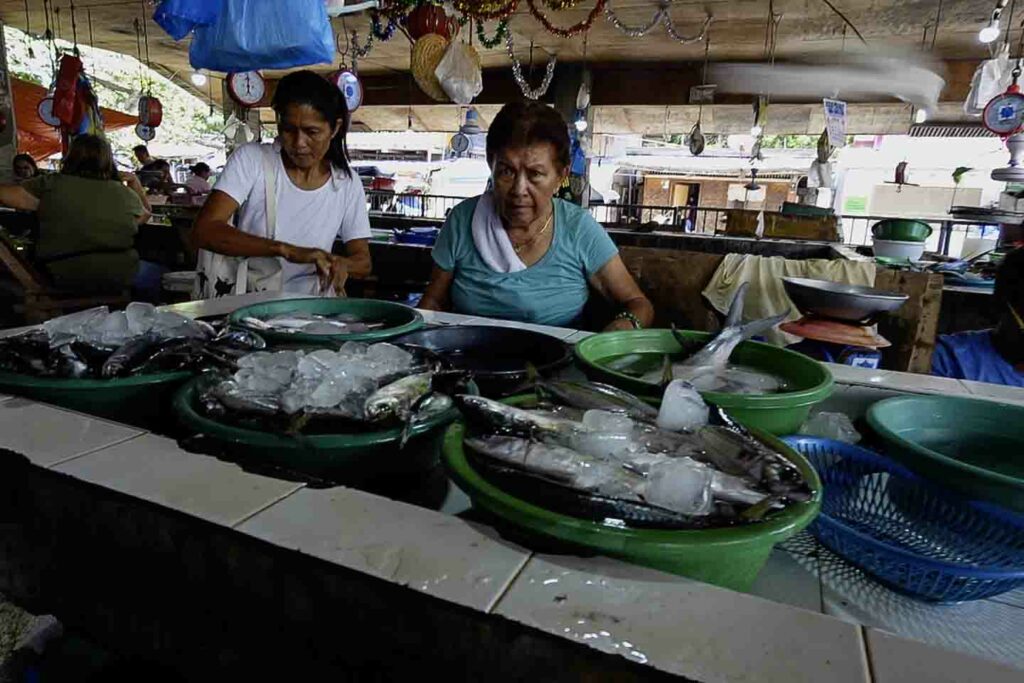
Why Visit Oslob
The town has a fascinating history that dates back to the Spanish colonial period. Established as a parish in 1830, Oslob played an important role in trade and commerce.
One of its notable landmarks is the Oslob Church, which features stunning baroque architecture. The church has a tall bell tower that offers great views of the surrounding area.
This coastal municipality is most famous for its unique attraction: swimming with whale sharks. These gentle giants, known locally as “butanding,” draw many visitors each year.
However, it is not responsible tourism to take a tour.
Whale Shark Tourism Issue
I’m concerned about whale shark tours in Oslob. Operators feed the sharks to attract them.
This practice can harm the sharks and disrupt ocean ecosystems. The sharks may lose their ability to find food naturally. It also throws off the balance of sea life. I think it’s best to avoid these tours.
We could not participate in this activity but instead spend the day looking to experience, local Filipino food, nature and history.
Best Things to Do in Oslob Outside Whalesharks
Visit the Oslob Public Market
We started the day at the local market in Oslob, Cebu. It was hot – almost 40°C! I looked for puto maya and sikwate, a classic Filipino breakfast.
Puto maya is sticky rice. Sikwate is a hot chocolate drink made from local cacao. The vendor heated up the sikwate for me. It was strange to have a hot drink in such warm weather!
The sikwate tasted like plain hot chocolate. No milk. The puto maya was sweet from cooking the rice down. In Indonesia we have similar sticky rice dishes so this felt like a taste from home.
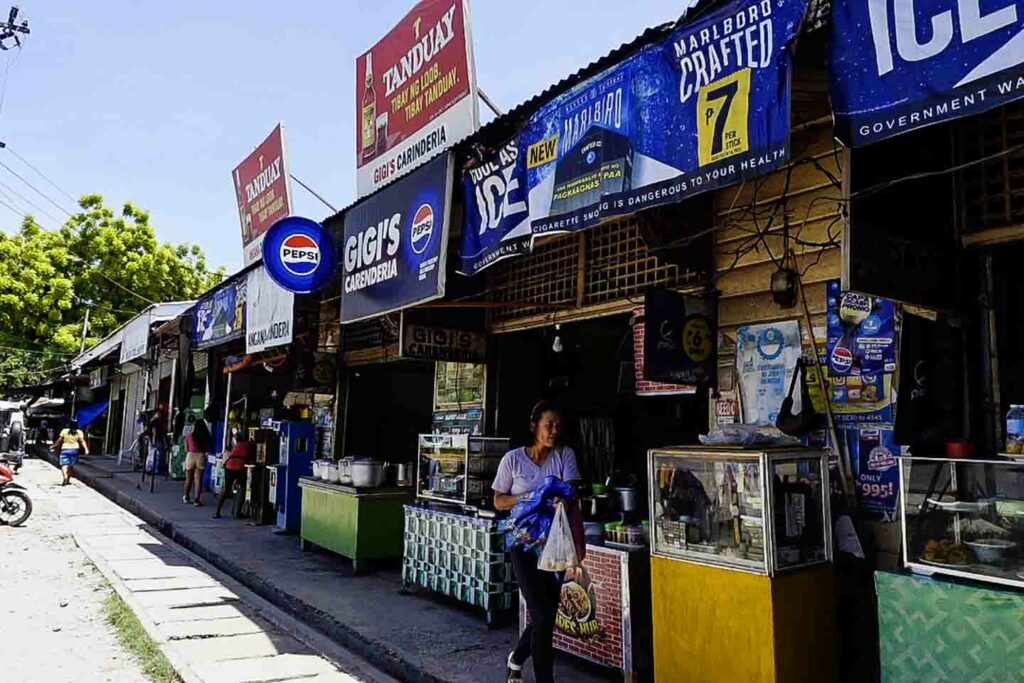
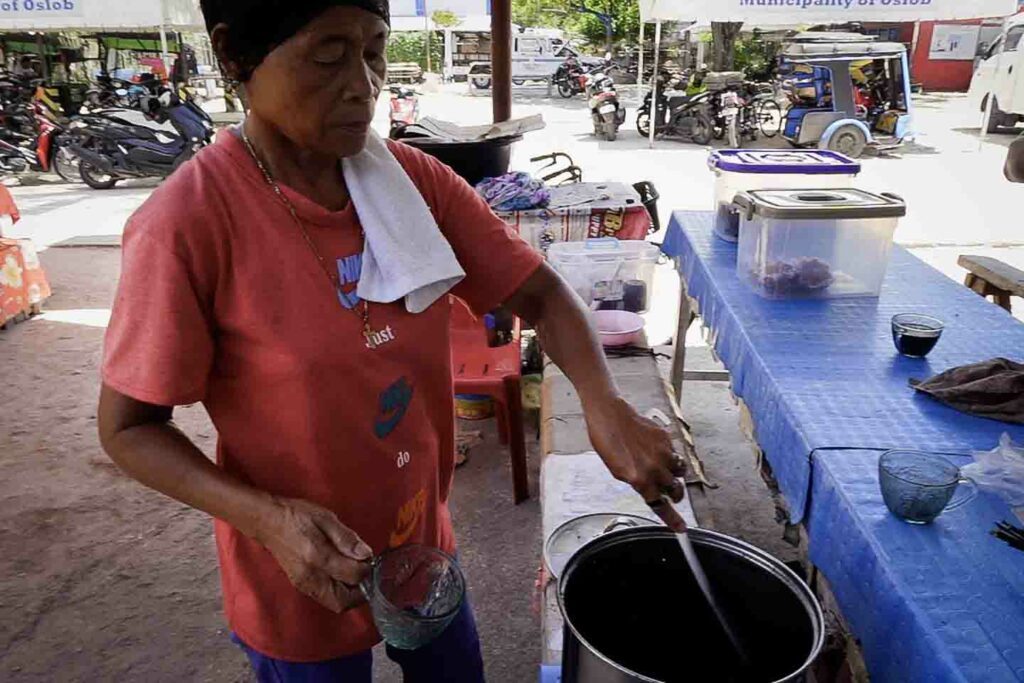
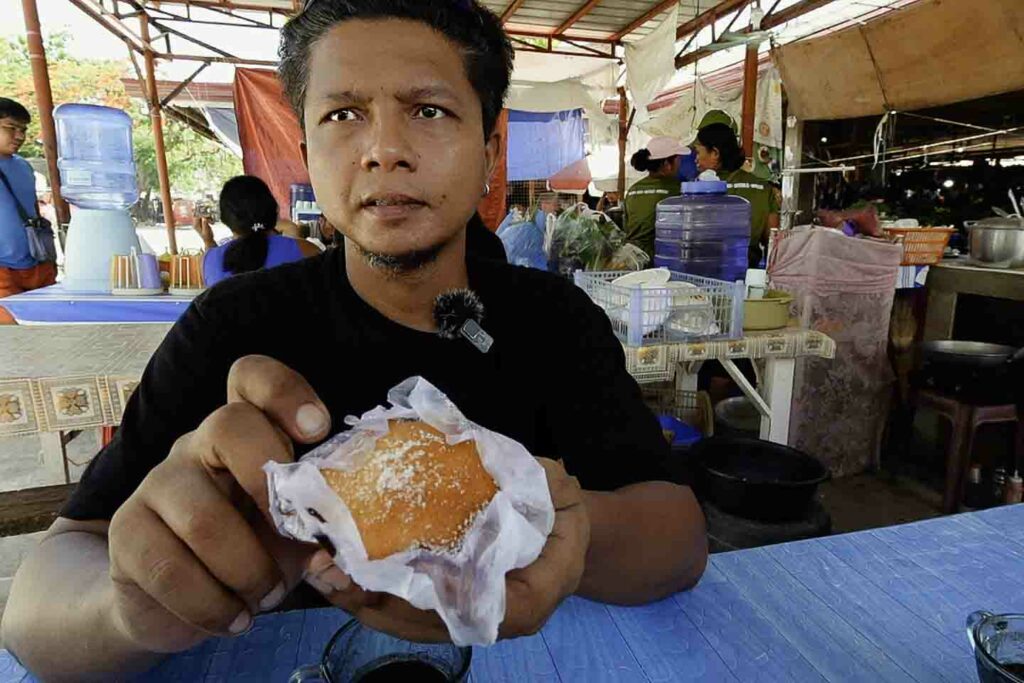
I also tried torta. It’s a soft cake with sugar on top that is common throughout Cebu. When diped in sikwate, it was my favorite part of breakfast.
I loved the torta I tried at the Oslob market. It’s a soft cake with sugar on top. Torta comes from Spanish influence in the Philippines. Many Latin American countries have their own versions too.
The whole meal cost 45 pesos – about $1 USD. What a deal!
Fruits in the Philippines
Hot vs. Cold Drinks
In Indonesia, we drink iced drinks when it’s hot. But some think hot drinks cool you down. I wasn’t sure about that today.
After our hot breakfast, we looked for iced coffee. We were already sweating. We found a small tea shop called Tea Mo instead.
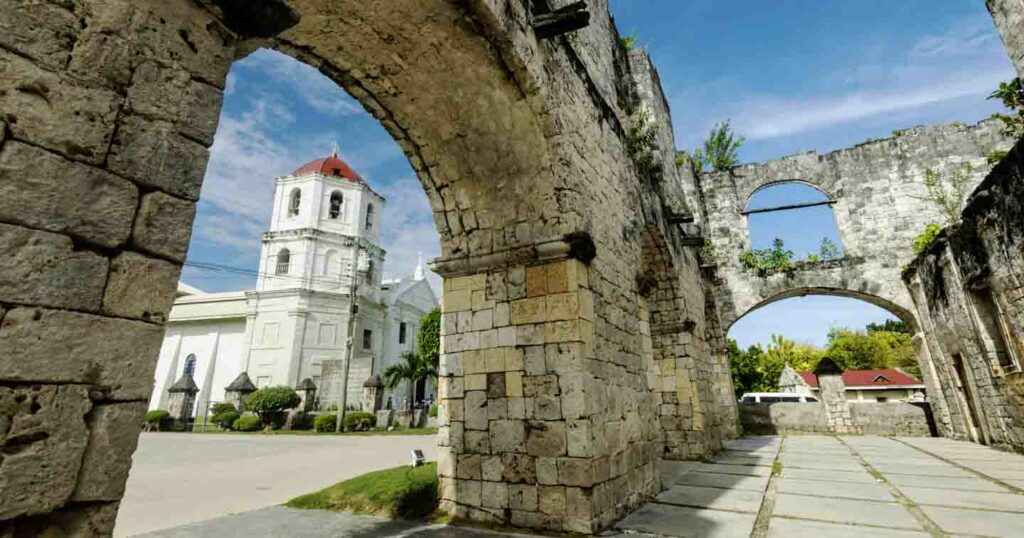
Oslob Heritage Park
Perhaps the most underrated tourist attraction in South Cebu, we really enjoyed walking around this small historical park. It was a hot day but as it’s right on the ocean there are fantastic views. Each of the buildings had its own story.
Cuartel de Guardia
Built in the late 1800s, many see this as ruins but it’s actually an unfinished building. Arched windows line the front of this structure that once served as a military barracks.
It was never completed due to the Philippine Revolution. The unfinished building showcases Spanish colonial architecture. Today, it makes for a very popular spot for locals to take social media photos and video.
Baluarte
Constructed in the 1800s, this watchtower was used for coastal defense. It was built by the Spanish to protect against pirates. The structure offers great views of the ocean.
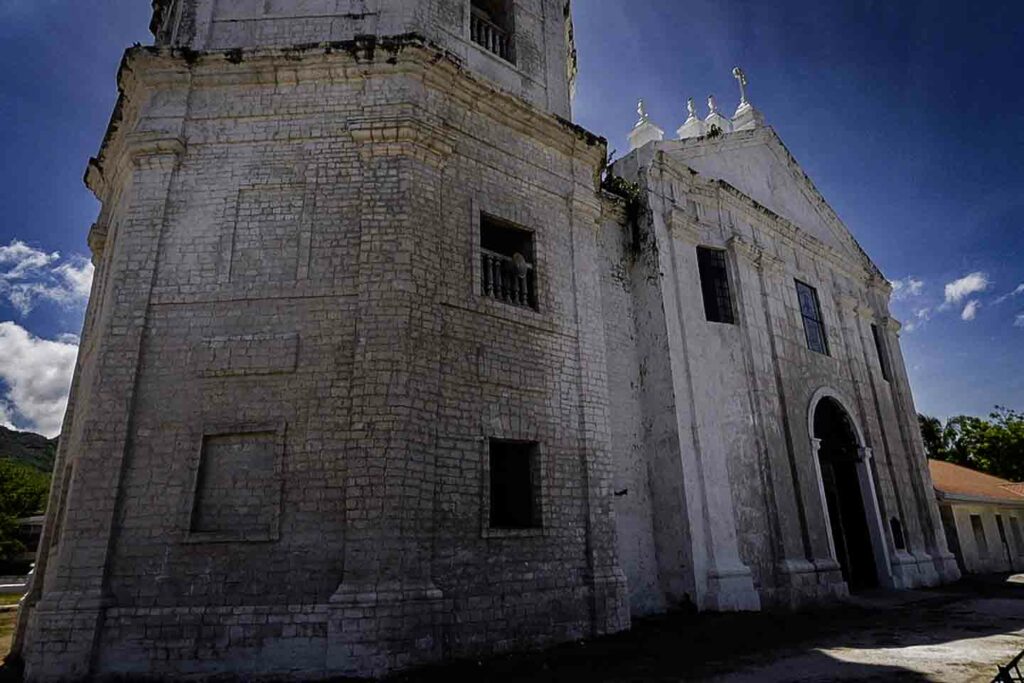
Church of Our Lady of Immaculate Conception
This church was completed in 1830 and is still in use today. It features beautiful baroque architecture and hosts regular religious services. The church is a central part of the community.
Oslob Heritage Museum
Established in 2017, this museum houses local artifacts and historical exhibits. It was built to preserve Oslob’s rich history. Unfortunately it was closed when we visited.
Old Spanish Bridge
This bridge was constructed in the 1800s to connect key areas of Oslob. It is made of coral stones and has historical significance. The bridge still stands as a reminder of the past.
Avoid Afternoon Sun
There are many great budget hotels looking onto the ocean but also have swimming pools for those times seaweed gets out of hand. We stayed at Germaroze and it was a great location and had parking for my motorbike.
The heritage park was quite hot so we spent a few hours resting in the shade by the pool.
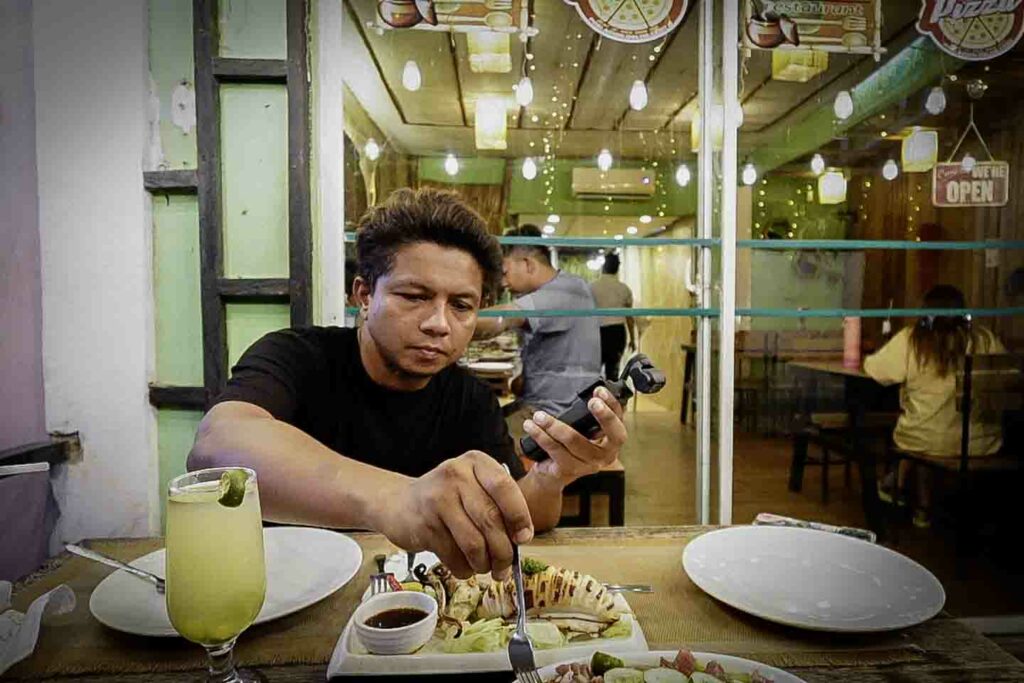
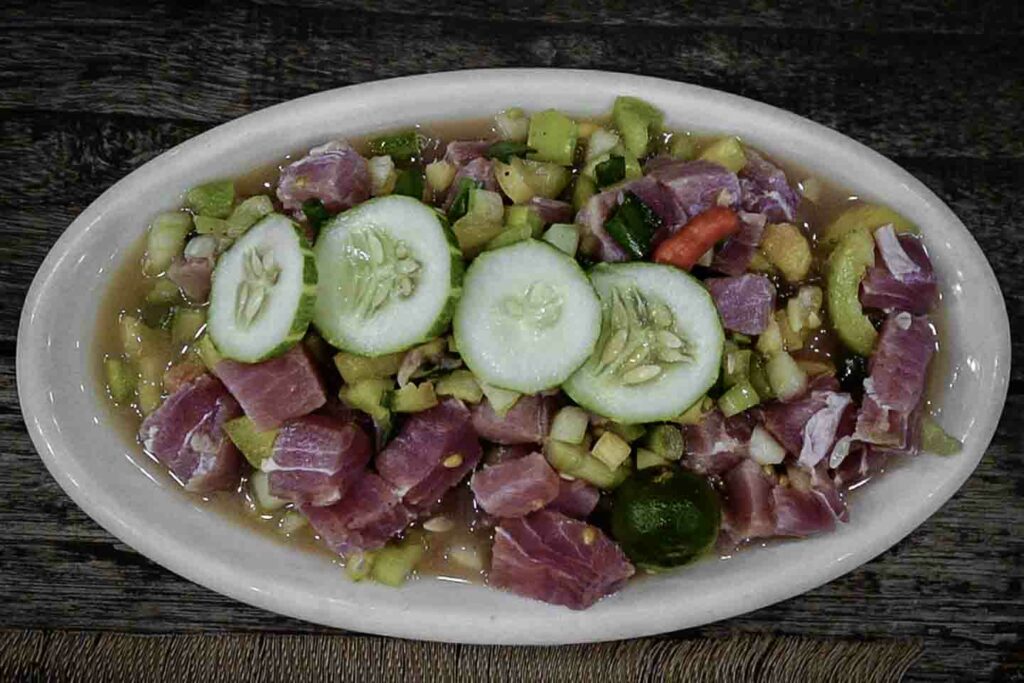
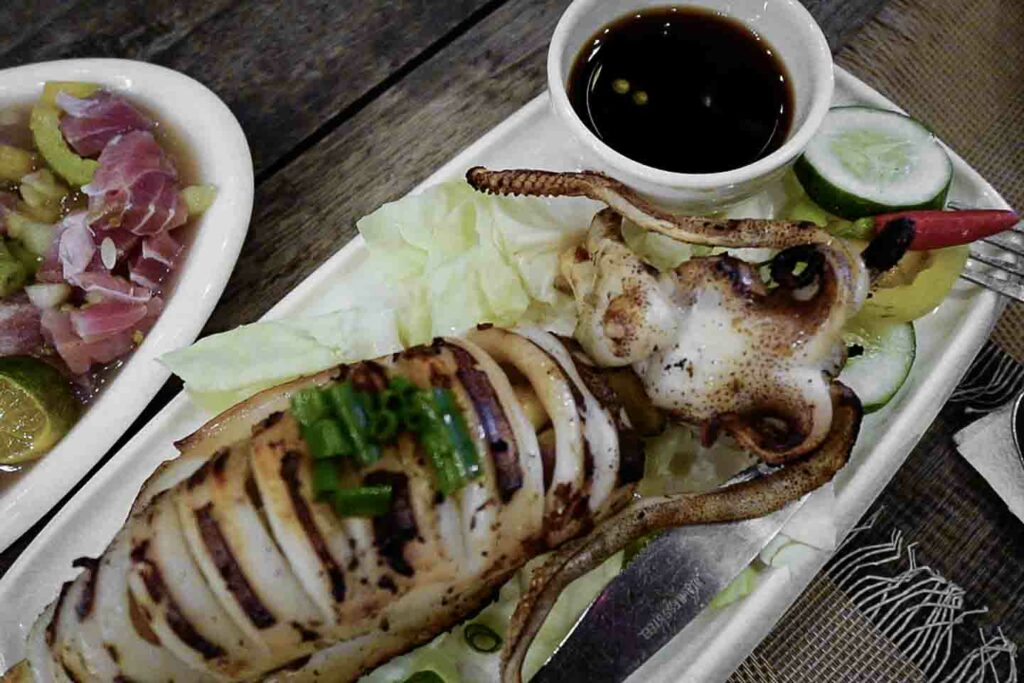
Don’t Miss Oslob’s Local Seafood
Oslob has a great reputation for seafood. And as most people who visit this coastal town are Filipino, the prices are very reasonable.
We visited the very popular AC Palayok and I tried kinilaw for the first time. It’s somewhat similar to ceviche, but instead of seafood marinate in lime, in the Philippines they use coconut vinegar.
It was delicious and so was the grilled squid served with a refreshing calamansi drink – maybe one of the most popular drinks in the Philippines.
We left early the next morning for Dumaguete but I can say that Oslob is definitely worth visiting.